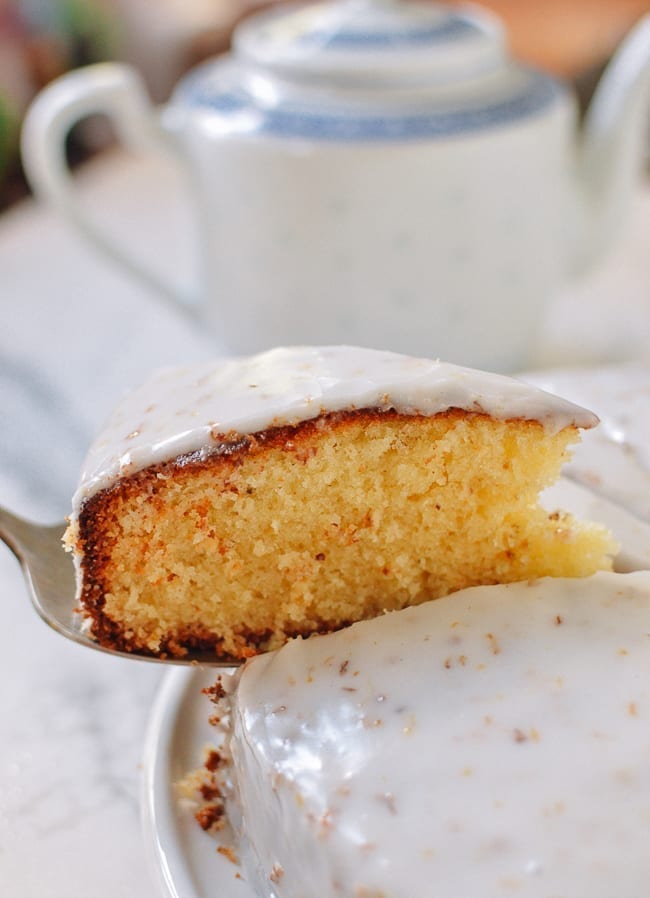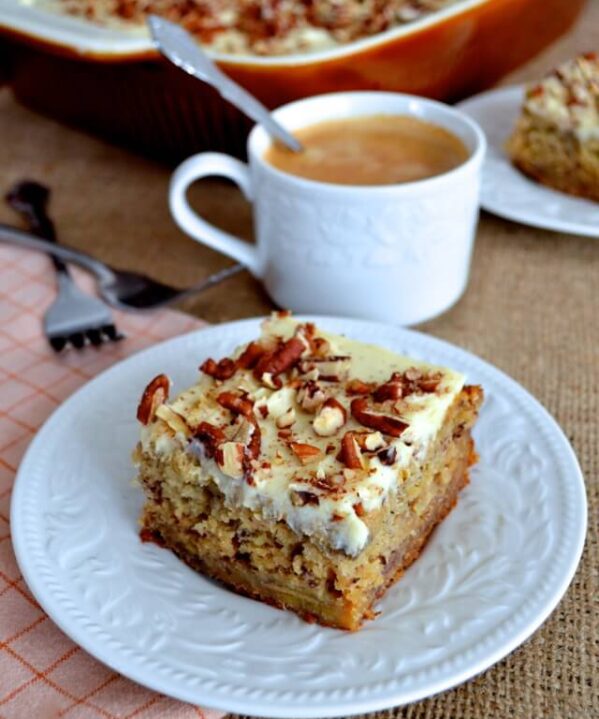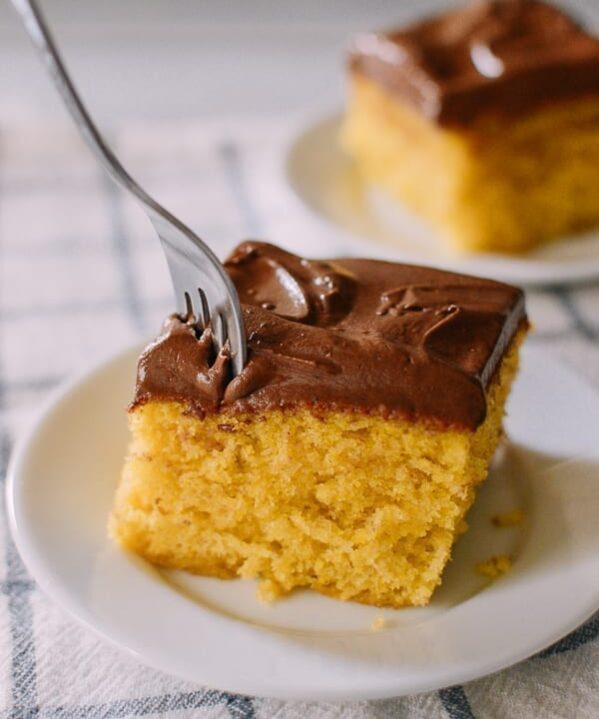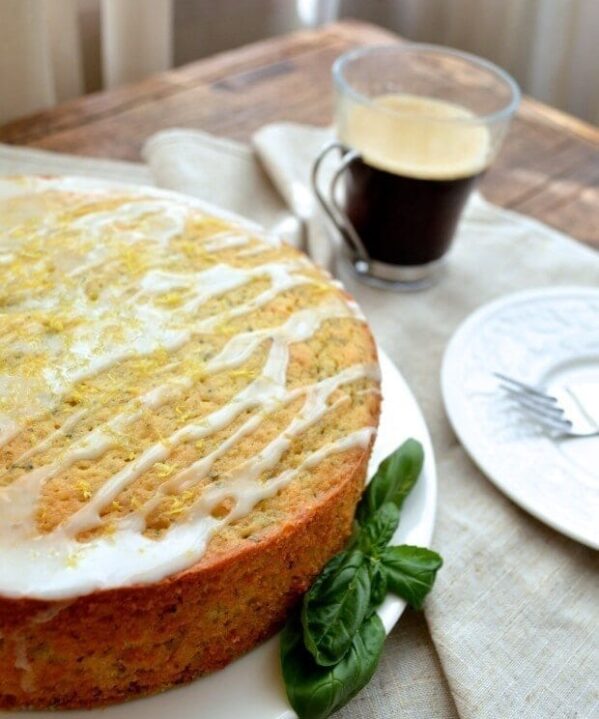This Osmanthus Cake has a moist, dense yet airy crumb, with a subtle sweetness from the addition of osmanthus syrup and vanilla. Since this perfect yellow cake emerged from the oven, with it’s dark, thick crust, it has become our latest obsession.
It’s the perfect dessert dressed up with whipped cream and berries (or just a scoop of ice cream), or the perfect breakfast and afternoon tea cake.
We’ve baked this about 10 times since we successfully developed the recipe. Every time, it’s gone in two days flat. In short, it’s incredible.
What is Osmanthus?
Osmanthus or guìhuā in Manadarin (桂花), is a sweet, fragrant flower native to East Asia. You may find it as a dried tea, in syrup for baking Chinese desserts, or as a flavoring in wine for braised meat dishes.
The closest equivalent you might know of is elderflower. Both elderflower and osmanthus share the same lightly floral, yet not overpowering flavor.
In this recipe, we’re using osmanthus syrup, which you can find jarred in Chinese grocery stores labelled 糖桂花 like the jar we used in the photo below..
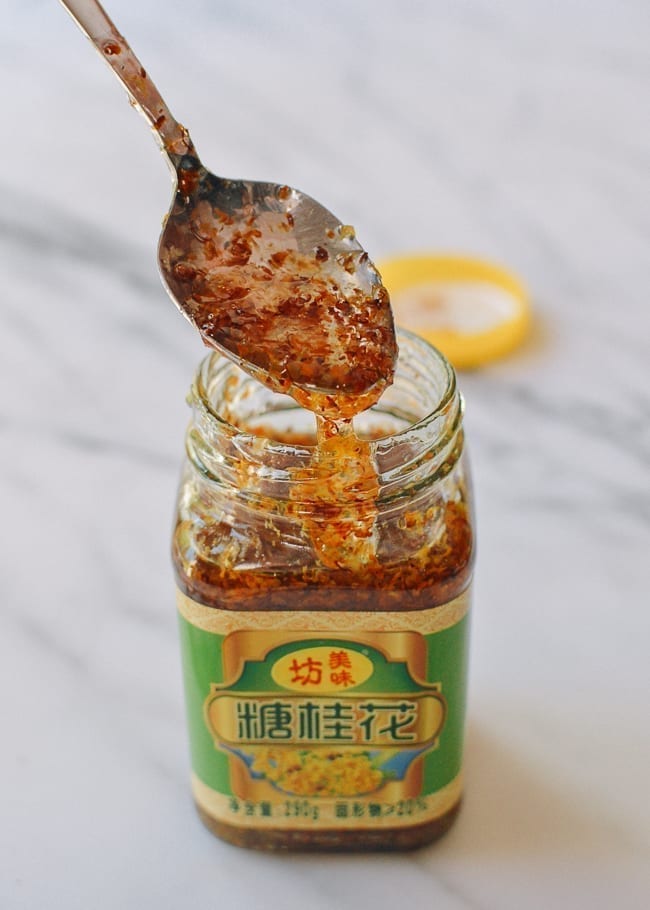
When it combines with vanilla and coconut oil (if you choose to use it), the result is a wonderfully fragrant cake that doesn’t taste obviously floral.
Rather, it’s got more sophistication than your average yellow cake, with all the richness one craves from a good sour cream cake or pound cake.

One of the Best (though perhaps a bit temperamental) Cakes—Ever.
Okay, so I’ve hopefully shown all the reasons why this cake is incredible. It’s also temperamental! Some recipes are just hard won, and this one is.
Pulling together the batter is easy peasy. But once it gets into the pan and hits the oven, that’s where things get a little tricky.
Why? This cake develops a very deep, brown crust. That crust is part of the full-bodied flavor of the resulting cake. However, it can quickly burn if you’re not watching it.
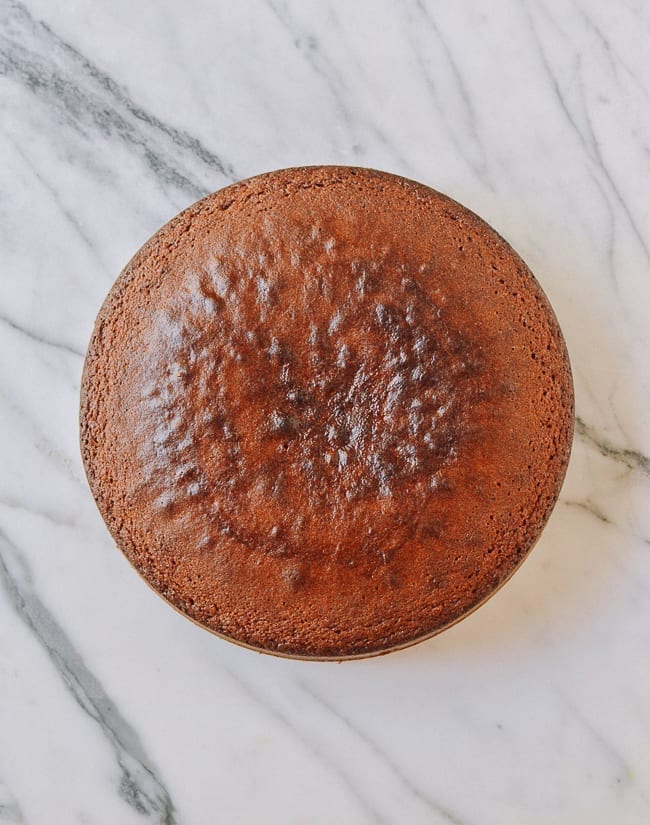
All ovens are different! So at the halfway mark, be mindful and keep a closer eye on this cake.
The goal is to get a deep brown crust while avoiding burning. You’ll need to reduce the oven temperature and tent the cake. This extra step also prevents you from prematurely poking the cake to test for doneness, which may result in it collapsing in the center.
The first time you make this osmanthus cake, take note of how it bakes up in your oven. I’m almost certain it won’t be the last time you make it, and you’ll want to be prepared for next time.
Substitutions & Alterations Not Recommended
If you follow these instructions carefully, you’ll get the right results. How do I know? I made this cake SEVEN TIMES before I got the baking times right.
I tried all sorts of different pans—bundts, muffin tins, larger pyrex pans, fancy parchment paper setups, and various oven temperatures. What you see is your best bet for getting the right results.
Don’t bother with anything but a standard 9-inch cake pan or an 8-inch square pan. If you use a pan with a nonstick coating, make sure it’s a light-colored coating, like the beige ones on the market, NOT a dark gray one. It will burn.
Any substitutions that will work are baked into the recipe (no pun intended), so for any other adjustments, make them at your own risk!
To glaze or not to glaze?
The glaze in this recipe is meant to cover the entire cake, and the result is almost like a deliciously glazed cake donut.
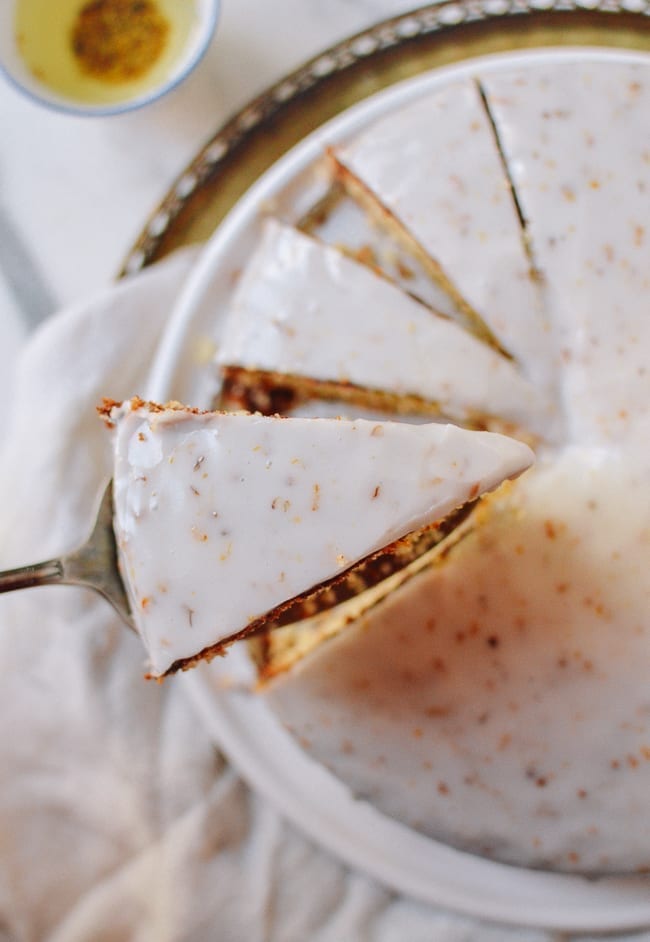
It adds an extra hit of sweetness, and it makes the cake prettier! That said, we’ve enjoyed this cake both glazed and unglazed in equal measure.
I would try it without the glaze first to see how you feel, and go from there!
Check out our other cake recipes!
While baking isn’t our blog’s focus, we love cakes and desserts. We only post cake recipes that we HAVE to document for posterity, like this Osmanthus Cake, as well as our favorite chocolate cake, yellow cake, and carrot cake.
Osmanthus Cake: Recipe Instructions
Preheat the oven to 400°F. Grease and flour a 9-inch round springform pan. You can also use an 8-inch square pan, but the pan should not have a dark non-stick coating, or it’s likely it will burn.
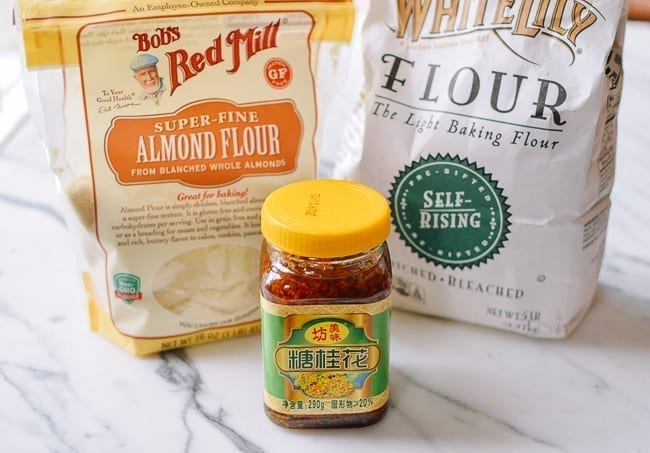
Add the room temperature butter, sugar, and vanilla extract to the bowl of an electric mixer fitted with the paddle attachment.
Beat on medium speed until light and fluffy, 1 minute. If your coconut oil is solid, add it at the same time as the butter. If it’s liquid, add it after the butter and sugar have had a chance to cream together.
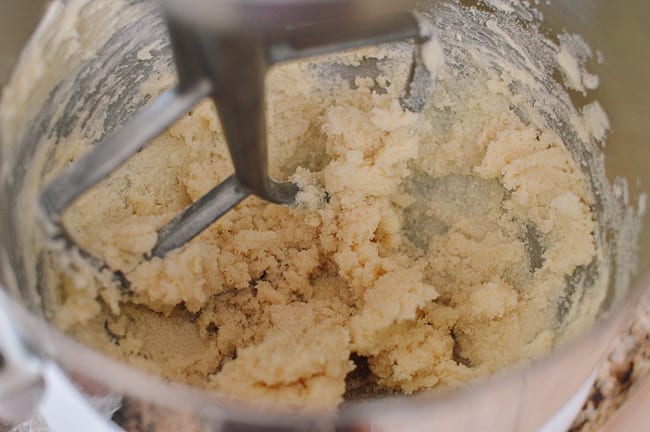
The mixture may be a little separated if you are using liquid rather than solid coconut oil. That’s okay. Scrape the sides of the bowl, and then add the eggs one at a time, beating well with each addition.
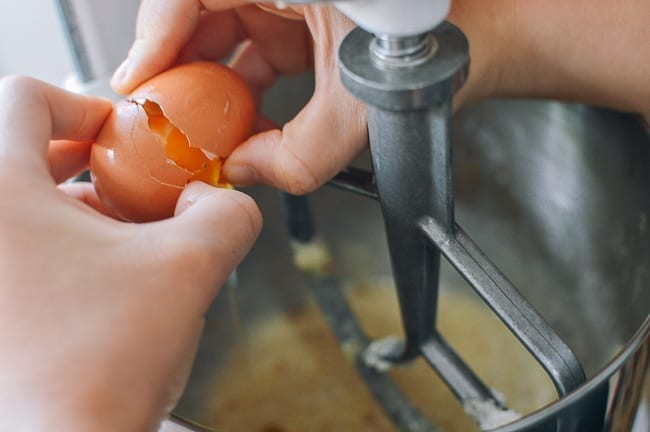
It should be golden in color and thickly emulsified.

Mix in the osmanthus syrup.
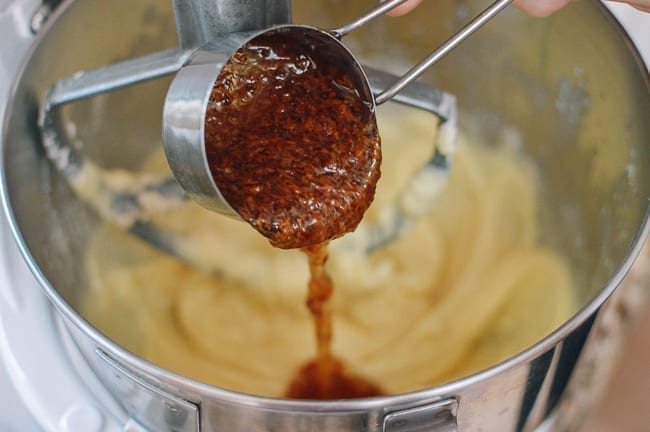
Give the bowl another scrape to make sure everything is mixed evenly.
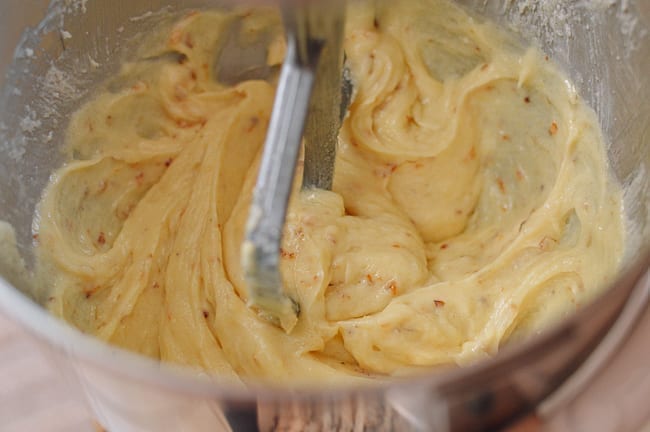
In a separate bowl, whisk together the almond flour, self-rising flour, and salt.
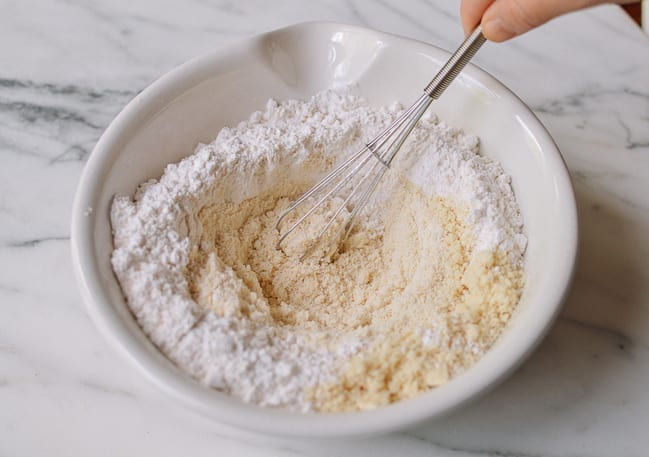
Turn the mixer speed to low, and gradually add the dry ingredients in three batches.
Don’t have self-rising flour?
For the 1 cup of self-rising flour in this recipe, substitute 1 cup of all purpose flour sifted together with 2 teaspoons baking powder.
Pour the mixture into your prepared pan. Immediately place into your preheated oven, and bake for 25 minutes. Reduce the oven temperature to 375°F, and tent the cake with foil. Bake for another 10-15 minutes.
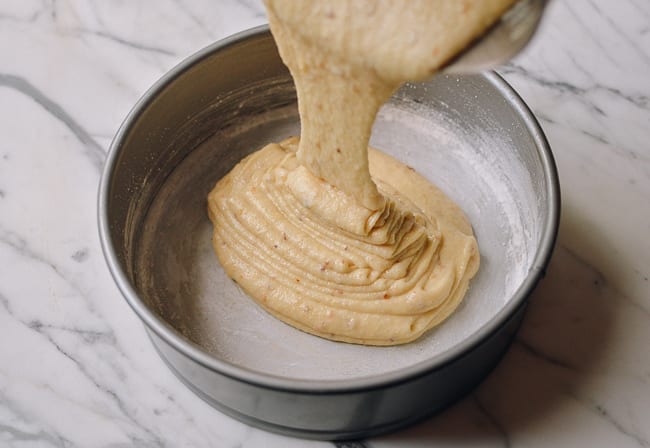
The cake is done when a toothpick inserted into the center comes out clean. NOTE, poking the cake prematurely may cause it to collapse in the center.
(If this happens, it’ll still taste good, so don’t worry!). Remove the cake from the oven to cool. It should be a deep brown color.
Cool for 20 minutes before removing the cake from the pan. A paring knife around the rim of the pan helps loosen it. Let cool completely on a wire rack before glazing.
If glazing the cake, whisk together the sifted powdered sugar, milk, and osmanthus syrup until you get a smooth glaze.
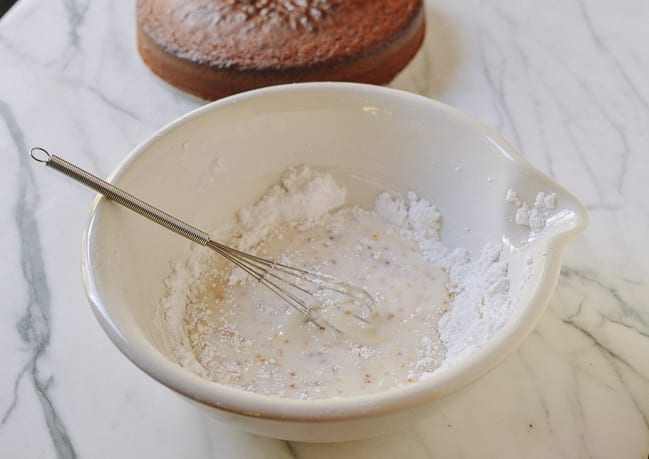
Start with 4 tablespoons of milk and only add the last tablespoon if the glaze looks too thick.
Pour over the cooled cake.
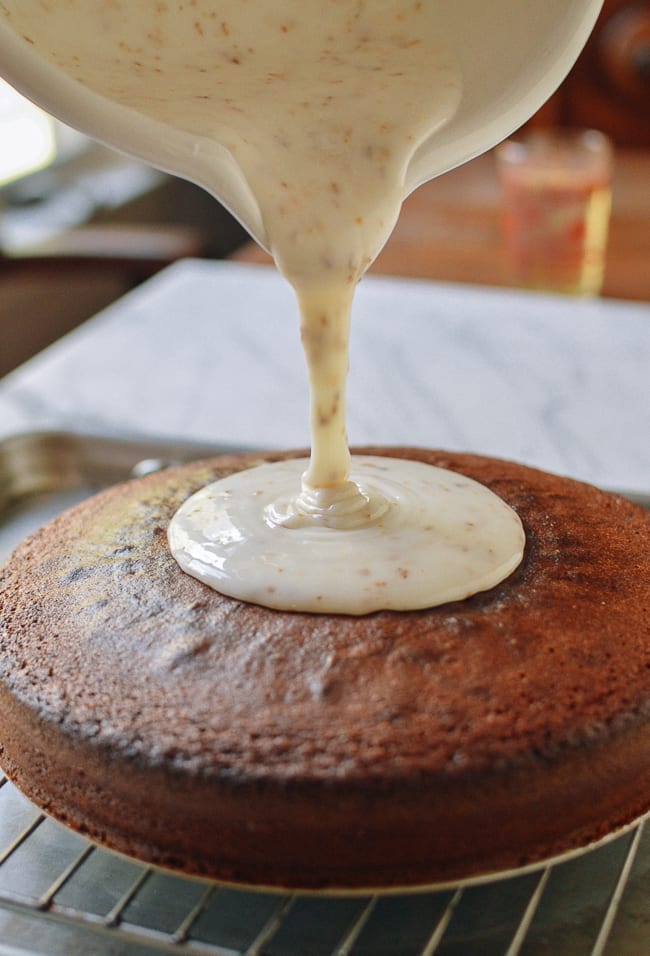
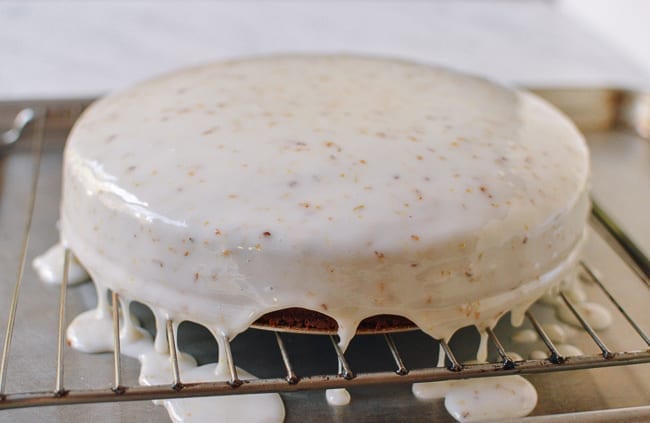
Slice and serve.
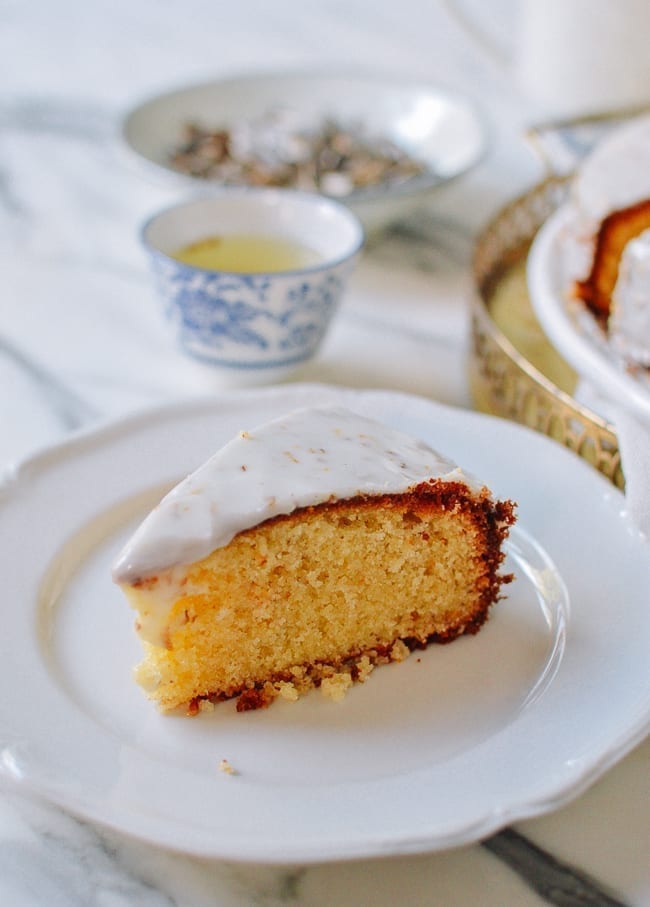
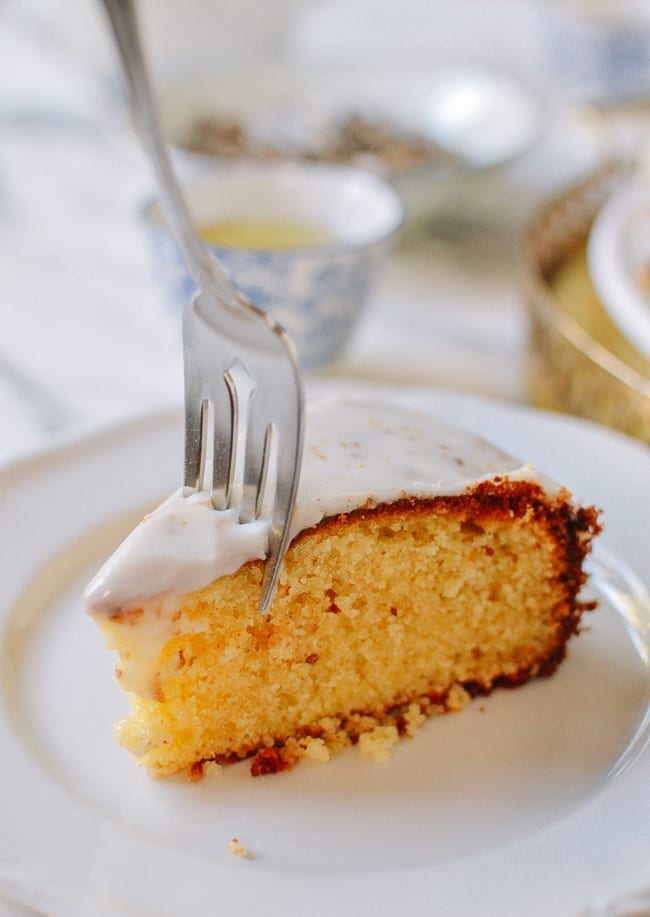
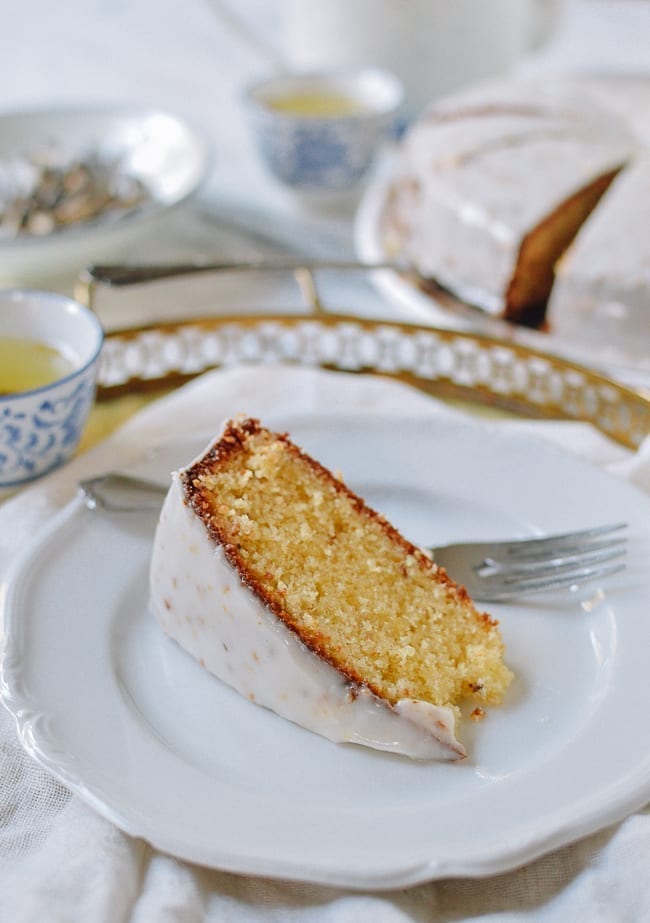
Osmanthus Cake
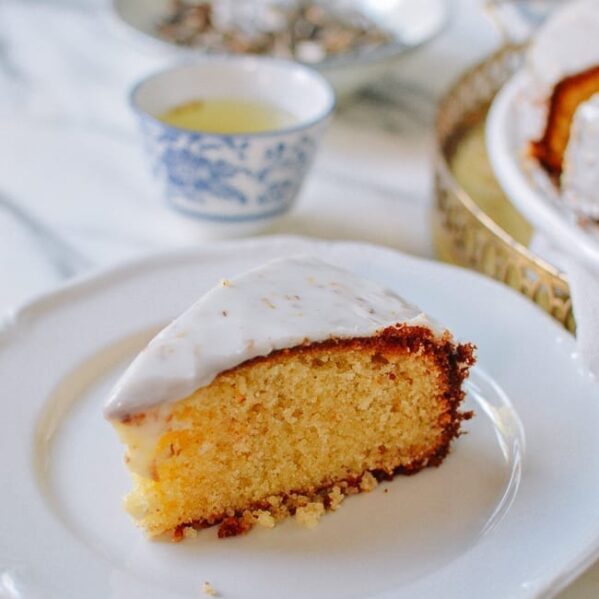
Ingredients
For the cake:
- 1/2 cup unsalted butter (at room temperature)
- 3/4 cup granulated sugar
- 1 teaspoon vanilla extract
- 1/2 cup oil (we’ve used neutral flavored coconut oil, regular coconut oil, avocado oil, and vegetable oil with success)
- 4 large eggs
- 1/4 cup osmanthus syrup
- 1 1/3 cups almond flour
- 1 cup self-rising flour (plus extra for dusting)
- 1/2 teaspoon salt
For the glaze (optional):
- 2 cups confectioner's sugar (sifted)
- 4-5 tablespoons milk
- 2 tablespoons osmanthus syrup
Instructions
- Preheat the oven to 400°F. Grease and flour a 9-inch round springform pan. You can also use an 8-inch square pan, but the pan should not have a dark non-stick coating, or it’s likely it will burn.
- Add the room temperature butter, sugar, and vanilla extract to the bowl of an electric mixer fitted with the paddle attachment. Beat on medium speed until light and fluffy, 1 minute. If your coconut oil is solid, add it at the same time as the butter. If it’s liquid, add it after the butter and sugar have had a chance to cream together.
- The mixture may be a little separated if you are using liquid rather than solid coconut oil. That’s okay. Scrape the sides of the bowl, and then add the eggs one at a time, beating well with each addition. It should be golden in color and thickly emulsified. Mix in the osmanthus syrup. Give the bowl another scrape to make sure everything is mixed evenly.
- In a separate bowl, whisk together the almond flour, self-rising flour, and salt. Turn the mixer speed to low, and gradually add the dry ingredients in three batches.
- Pour the mixture into your prepared pan. Immediately place into your preheated oven, and bake for 25 minutes. Reduce the oven temperature to 375°F, and tent the cake with foil. Bake for another 10-15 minutes.
- The cake is done when a toothpick inserted into the center comes out clean. NOTE, poking the cake prematurely may cause it to collapse in the center. (If this happens, it’ll still taste good, so don’t worry!). Remove the cake from the oven to cool. It should be a deep brown color.
- Cool for 20 minutes before removing the cake from the pan. A paring knife around the rim of the pan helps loosen it. Let cool completely on a wire rack before glazing.
- If glazing the cake, whisk together the sifted powdered sugar, milk, and osmanthus syrup until you get a smooth glaze. Start with 4 tablespoons of milk and only add the last tablespoon if the glaze looks too thick. Pour over the cooled cake.
